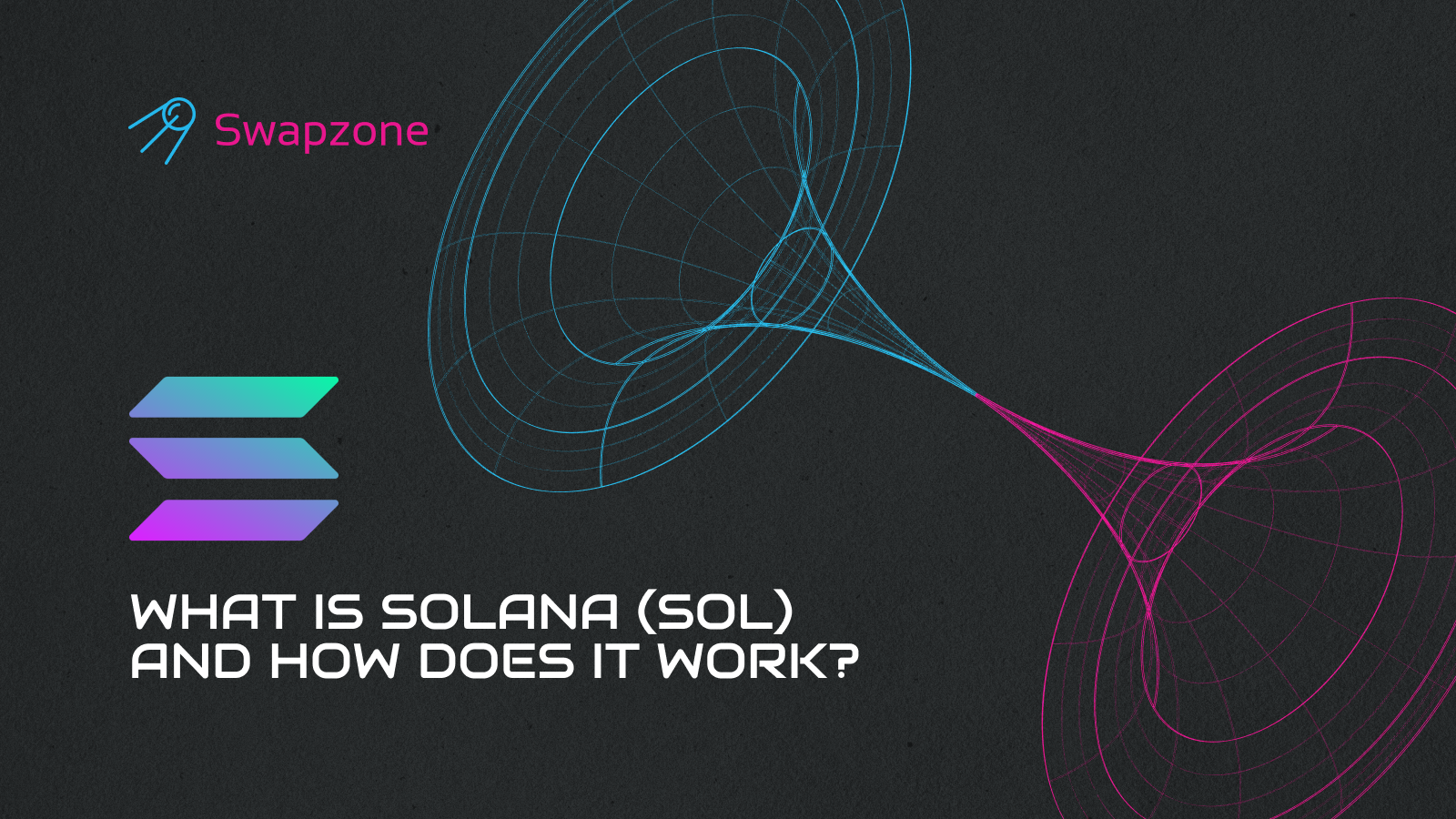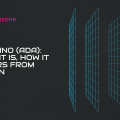People around the world nowadays are gradually adopting a new format of money. In some countries, it is possible to pay with cryptocurrency in cafes, cinemas, and even for rides on the subway. According to many experts, in ten years, the most developed countries on the planet will completely abandon fiat money and use cryptocurrency. And what is the most popular cryptocurrency?
Despite the existence of famous blockchains like Bitcoin and Ethereum, there is a very popular coin called Solana. There are many people today who have heard about this cryptocurrency but don’t know if it has potential for investment. This article will tell you more about what Solana is, its history, how it works, and more.
Key Information About Solana (SOL)
Solana is a project that was created in 2017. However, it started working in test mode only a year later. The essence of the project is the creation of a blockchain network without sidechains (blockchain partition targets) and parachains (blockchains that have their own tokens and special tools for solving certain tasks). By the way, experts consider this project quite promising. One of its benefits is the speed of transactions: approximately 65 thousand per second. We have gathered information on what some celebrities say about this project:
- Jack Dorsey, the CEO of Twitter and Square has expressed himself positively to Solana and named it as the solution that has a lot of relevance to assist Bitcoin to scale. He also said that it makes a ton of sense for some use cases, given the speed and costs associated with it.
- Tesla Company’s Chief Executive Officer, Elon Musk has not directly supported Solana but has expressed the need to have a cryptocurrency with high capability of handling many transactions in a single second. Solana is designed exactly for that purpose of scaling the blockchain and being able to accommodate higher traffic.
Solana – is a SOL cryptocurrency, which in terms of capitalization has not left the top 10 for quite a long time. It can be bought on almost every service for trading virtual currency. Depending on the platform, the Solana rate varies from 160 to 170 dollars per one coin.
What is the History of the Solana Creation?
Solana is one of the youngest major blockchains to appear in the cryptocurrency space, which was launched in 2020 as a high-speed blockchain for creating decentralized applications, similar to Ethereum. Solana was founded by Anatoly Yakovenko, who developed a distributed system at Qualcomm, together with the co-founders Greg Fitzgerald and Stephen Akridge. Yakovenko got into blockchain in 2017 and while he was amazed by the new possibilities offered by the technology, he was not satisfied with the performances of existing blockchains in terms of transaction rates. He was made aware that there is a need to create a new architecture that allows blockchains to handle thousands of transactions per second at very low costs and maintain decentralization and security.
Having a background in systems optimization at Qualcomm, Ukrainian developer Yakovenko published this whitepaper in 2018, in which he presented a new blockchain protocol, called Proof of History (PoH). This created a block/device level tiered consensus mechanism for integrating a cryptographically verifiable passage of time into the network, which enabled Solana to order its transactions in an optimal manner without the competition of PoW energy consumption.
Solana unveiled its initial coin offering in 2018 and managed to gather over $20 million in funding by the end of that year. The main version was released in 2020. It grew rapidly as developers initiated various projects across DeFi, NFT marketplace, etc., due to high speed and low cost on the network. Infrastructure projects like Serum, a decentralized exchange, made Solana a rival to Ethereum and other Layer 1 solutions.
Solana in Recent Years
Namely, by 2021, Solana became one of the fastest-growing ecosystems in the crypto world, and after attracting $314 million from investors, it entered the top 10 cryptocurrencies. However, it was also pivotal to some crippling stability problems that year that, in turn, raised concerns over the stability of the network on a larger scale.
Still, Solana has been shifting and developing, solidifying as an exceptional blockchain that is capable of some of the best performances in the industry. By the time of this writing in 2024, Solana had hundreds of projects built and billions in total value locked into its DeFi protocols, indicating that there was indeed significant demand for a high-speed blockchain that could scale to meet the needs of a decentralized future. It remains as one of the most challenging and arguably innovative projects in the realm of decentralization to date.
At the moment, there are about 480 million Solana tokens in turnover on the market. This means that this blockchain has a huge future. For example, the most famous cryptocurrency Bitcoin has reached the mark of 19 million tokens in circulation. Mathematicians have calculated that new bitcoins will stop being generated in about 100-120 years.
What are the Features of Solana Cryptocurrency?
As you may have already realized, Solana went from an unknown cryptocurrency to a project that attracts millions of dollars rather quickly. What makes it so attractive and unique?
- Speed and Scalability. As statistics show, SOL can handle more than 50,000 transactions per second, therefore being among the fastest blockchains. It mostly adopts a consensus type called proof-of-history alongside proof-of-stake that enhances speed.
- Low Fees. Solana has significantly lower average transaction costs. Usually they are below $0.01 per each operation. This makes micropayments as well as decentralized App creation very realistic.
- Security. Solana uses proof-of-stake consensus alongside voting in order to enhance the security of the network. This has been a major strength of it since it has never been involved in any major exploits or hacks.
- Programming Language. On Solana, you can use Rust or C in developing programs as well as smart contracts. This makes it easier for developers as compared to specific languages that may be tied to the blockchain only.
- Climate Friendly. Solana asserted that the platform uses significantly less energy than proof-of-work systems such as Bitcoin. This makes it referred to as more environmentally friendly and sustainable.
- Decentralized Apps. Currently, Solana supports more than 400 projects and DApps across various fields such as DeFi, NFT, and Web3. Some of the well-known apps include Serum, Star Atlas, and StepN, among others.
Now you know that Solana has innovative scaling solutions, networking speed, low-cost structure, and the ability to adapt to the needs of developers. All of these facts make Solana such a popular cryptocurrency on exchanges and are the reason why the price of this coin is rising rapidly.
Working Principle of Solana Blockchain
Launched in 2017, Solana is one of the swiftest and most revolutionary blockchain networks in the crypto niche. Its goal is to offer high scalability and rates of transactions, though it remains decentralized and safe. Well, let’s examine how exactly the Solana blockchain functions at the core level.
- First, it is crucial to note that Solana is a Proof-of-Stake blockchain that implements an innovative proof mechanism called PoH. This makes it possible for Solana to use cryptography to confirm the time difference between events on the net without applying the conventional timestamp systems.
- The main mechanisms of Solana are not limited to PoH. There is also a proof protocol called Tower Byzantine Fault Tolerance. This makes it possible for Solana to come up with a consensus on the legitimacy of the transactions as well as keep track of the nodes.
- Another mechanism that Solana employs is something known as transaction pipelining, which is its scaling solution. This way, transactions can be distributed, approved, and recorded simultaneously, like in a conveyor belt.
Due to these considerations, Solana offers a decentralized blockchain with more than a thousand nodes worldwide while offering, through innovations characterized above, speeds comparable to centralized payment system providers. In recent times, developers have been creating dApps, tokenized markets, and Web3 on the Solana network to enjoy low and speed transactions. With such a hectic schedule, Solana seeks to be the Visa of the cryptocurrency world – a base layer set to support new-age blockchain solutions.
Comparison of Solana and Ethereum
Among the current leaders of the cryptocurrency market, there are two noteworthy projects – Solana and Ethereum. However, many users do not know which option to give their preference to for profitable investment of personal funds. Both Ethereum and Solana are available for sale/buy on many exchanges around the world, including Swapzone.
Before we start comparing Solana and Ethereum, it is important to consider the blockchain trilemma. What is that? In brief, the blockchain trilemma is a concept proposed by Ethereum co-founder Vitaliy Buterin. According to him, developers of decentralized blockchains cannot provide security, decentralization and scalability at the same time.
Security
Both Ethereum and Solana prioritize security by using robust mechanisms to protect user funds and maintain network integrity. In both cases, validators use their own tokens (ETH for Ethereum and SOL for Solana) to verify transactions.
However, the approaches of the two systems differ in the implementation of the Proof of Stake (PoS) mechanism. Compared to some existing PoS blockchains, the current PoS implementation in Ethereum is still under development, while in Solana the PoS mechanism is used along with PoH.
Decentralization
Decentralization is a basic principle of blockchain. It involves distributing power and control across the network without the need for a central authority. Both Ethereum and Solana seek decentralization through the PoS consensus mechanism. Under PoS, validators are responsible for verifying transactions by contributing their native tokens to the stack.
In addition, both platforms aim to achieve a degree of censorship resistance by distributing the validation process across a global network. As a result, no single entity can control or block transactions on the network.
Scalability
Scalability is the ability of a blockchain to handle an increasing number of transactions without slowing down processing speeds or increasing fees. Scalability is critical to widespread blockchain adoption, as high gas fees tend to deter regular transactions. Ethereum and Solana differ on this issue, as each network handles high transaction volume in its own way.
Is Solana a Good Investment Object?
Now it’s time to summarize this article and answer the main question that interests millions of people around the world – is it worth investing in Solana cryptocurrency? Every investor, trader and beginner should understand and accept the high level of risk in the cryptocurrency world. That is why investments in both Solana and other cryptocurrencies have approximately the same risk: virtual currency is not at all characterized by stability. However, SOL has been one of the most popular cryptocurrencies for quite some time.
Let’s consider the case study of how much income you could have generated if you had invested 100 USD in SOL a few years ago. For example, in May 2020, one Solana coin was equivalent to 0.5 USD. For an investment in the form of a banknote with the image of Benjamin Franklin, you would have gotten about 200 coins at that time. Such an investment would easily make you 32 thousand dollars richer today. Sounds incredible, doesn’t it?
Should you invest in the Solana blockchain in 2024? Some experts firmly point to the active growth of this cryptocurrency today, tomorrow and in a few years. It is enough to remember such coins as Bitcoin and Ethereum to be convinced of long-term investments. There is even a forecast table about the future value of Solana. According to this information, one coin of the cryptocurrency will cost about 500 dollars already in two years.


